Chapter One. From The Fever: How Malaria Has Ruled Humankind for 500,000 Years (Sarah Crichton Books/ Farrar, Straus & Giroux, 2010), by Sonia Shah
The view through the mosquito net is blurry, but I can see the thick skin of grime on the leading edge of each blade of the ceiling fan as it slowly whirs around, keening alarmingly. This is how it was every summer when I visited my grandmother’s house in southern India. While my cousins snore on the bed mats laid across the floor beside me, glistening bodies bathed in the warm night breeze, my sleeping mat is ensconced in a hot, gauzy cage. The mosquitoes descend from the darkened corners of the whitewashed room and perch menacingly on the taut netting, ready to exploit any flicker of movement from their prey within. It is hard to fall asleep knowing they are there, watching me, but eventually I drop off and my tensed body uncurls. They sneak into the gaps my protruding limbs create, and feast.
In the morning, all my hard work of trying to fit in, to overcome the Americanness of my suburban New England life, has been undone, for my Indian cousins are smooth and brown while I am speckled with bleeding scabs. My grandmother vigorously pats talcum powder over my wounds, the white powder caking pink with congealed blood, as my cousins snicker. I don’t understand how they escape unscathed while I am tormented. But incomprehension is part of the package of these childhood summers in India. Just outside my grandmother’s house ragged families huddle in rubble along the road and use the train tracks as their toilet. They wave their sticklike arms in my face and moan woefully when we pass by on the way to temple, caricatures of beggars. One boy’s leg has swollen to the size of a log, and is gray and pimpled, from some disease brought on by a mosquito bite. My grandmother tightens her grip on my hand. We give the children nothing. I can’t understand this, either. When we get to the white marble temple, it is full of incense and golden statues encrusted with diamonds and rubies—to my seven-year-old mind, the very picture of prosperity.
Part of me despises my estrangement, my incomprehension, the fact that I must sleep under the suffocating net and take the malaria pills while my cousins don’t. But part of me is secretly glad. The boy with the swollen leg frightens me. The little family who live on the curb frighten me. India frightens me. These fears, for the girl who is supposed to be Indian but isn’t, are unspeakable.
When no one is looking, I crush the mosquitoes poised little figures with my palm and smear the remains on a hidden seam in the couch. Our Jain religion forbids violence of any kind. No eating meat. No swatting flies. My grandmother wears a mask over her mouth while she prays, to protect airborne microbes from inadvertent annihilation in her inhalations, and considers walking on blades of grass a sin. Meanwhile, there I am in the corner, cravenly pulverizing mosquito corpses behind my back, blood literally on my hands.
Back home in New England, the mosquitoes still bite, but there are no nets at night, no pills to take, no scary beggars on the side of the road. We shop for forgettable plastic trinkets at the mall. My fear and loathing of the mosquito is blunted into games of tag. My father calls himself Giant Mosquito, undulates his fingers like proboscises and chases me and my sister. It’s scary, but fun-scary. We screech with glee and stampede through the house.
• • •
Thirty years later, on the S-shaped land bridge between the North and South American continents, I meet José Calzada. Calzada is mosquito stalker of sorts, and I, the mosquito hater, have come to learn about the local mosquitoes and their exploits. A parasitologist from Panama City, Panama, Calzada spends his time rushing to the scene of disease outbreaks across the isthmus. The mosquito-borne parasite that causes malaria, Plasmodium, is one of his specialties.
It is April 2006. For most of the past century, there hasn’t been much work in this field for people such as Calzada. Panama prides itself on being one of just a handful of tropical developing countries to have tamed its mosquitoes and nearly conquered malaria. American military engineers built a canal through Panama in the early 1900s, and forced malaria to retreat to the remote fringes of the country. Since then it has stagnated, primarily in its most benign incarnation, vivax malaria, which is rarely fatal.
But things have changed in recent years, and Calzada has agreed to show me some obscure signs. He emerges from the imposing Gorgas Memorial Institute, Panama’s sole health research center. Clean-shaven and trim, Calzada has a slightly worried look in his eyes that is offset by high cheekbones suggesting a perpetual half-smile. I wait while he meticulously changes out of his work clothes—button-down oxford shirt and slacks—and into a T-shirt and jeans.
Climbing into my diminutive white rental car and tossing a baseball cap on top of his backpack in the backseat, he patiently directs me out of the labyrinthine metropolis. Navigating Panama City’s congested streets, past shiny skyscrapers and packed cafés, is a task that challenges even my well-honed Boston driving skills.
After twenty minutes heading east out of the city, the road turns quiet. It’s a lovely drive, with hills in the distance, verdant pasture and scrub unbroken save for a few elaborately gated houses set far back from the road. Colombian drug lords, Calzada says, by way of explanation. Another hour passes, and the road rises, a glittering lake coming into view, just visible through a tangle of jungle. As we near the water, the pavement ends, and we pull over.
Here, at the end of the road, is the town of Chepo. From what I can see, it consists of a wooden lean-to facing a sleepy roadside café. Two police offers amble out of the lean-to, which turns out to be a checkpoint. They take my passport and vanish, leaving Calzada and me to buy a cold drink at the near-empty café. As we sit, I can just make them out in the murk within the lean-to, inspecting the blue passport with great care, turning it over and over in their hands as if for clues to some baffling mystery.
Inspection completed, Calzada leads us on foot behind the road to the side of a steep hill. The hillside is green and lush, with a slick red clay track leading to the crest. He heads up, and I follow, gingerly.
At the top of the hill, hidden entirely from the road, lies an improbable settlement. Packed together, not ten feet apart, are dozens of hand-built ranchos, their thatched roofs sitting on top of roughly hewn wooden poles. More arbor than hut, some of the structures rest on concrete slabs, with airy wooden-slat walls on three sides, but most are fully open-air, situated directly on the packed dirt. Inside the ranchos, smoldering fires are encircled by battered metal cooking vats, parrots sit on overturned baskets, and hammocks sway from high rafters.
From the road, Chepo seems abandoned, but in fact, three hundred of Panama’s indigenous Kuna people live here, tucked away.
It starts to rain, and we duck under the eaves of a rancho. Women pass to and fro in bright puffed-sleeve cotton blouses with patterned molas tied around their waists and elaborate beaded anklets that reach up to their calves. They are cutting plantains, carrying plump naked children. One puts out a giant metal vat to collect the rainwater sliding off the thatch. A rooster strides by purposefully.
A half dozen boys clad in saggy cotton underwear and wearing shell necklaces happily kick a deflated green soccer ball. One boy, around eight years old and wearing cracked red plastic flip-flops, gnaws on a green mango pit while absentmindedly pulling on his penis. A little girl walks by holding a baby covered in a rash, whom she hands to me easily. It is a tranquil scene, earthy and ripe, this hidden place at the end of the road.
It is soon apparent that most of the residents are in one of the larger ranchos, sitting around a smoky fire. Peeking in, we see them singing softly and dancing. A few are sprawled on the clay floor, facedown, passed out. We’ve arrived in the midst of a fiesta, Calzada whispers to me. A local girl has recently menstruated for the first time, and so the community has spent the day drinking chicha fuerte, a brew made from fermented corn. As we watch, a woman and a boy lift a comatose mud-caked man off the ground and drag him home. Two women from inside the rancho follow them to the doorway, smiling. Aside from a few furtive looks, they ignore us almost entirely.
It wasn’t like this the year before, when Calzada first came here. There is no English-language record of what happened to Chepo’s Kuna community in 2005, save the one you are reading now. The mosquitoes that hatched from Chepo’s stagnant puddles, the edges of the lake below, in the open-water cisterns, had gone on a rampage. Contaminated with the most malevolent malaria parasites known to humankind in their spittle, they alit on the exposed and unclad Kuna around them. By the time Calzada and his team arrived, nearly half of the settlement was fevered, terrified, immobilized in their hammocks.
After days of triage, Calzada brought samples of the Kuna’s infected blood back to his lab at the Gorgas Institute to analyze. The most common malaria in this part of Panama is the relatively benign vivax strain, caused by malarial parasites called Plasmodium vivax. Instead, Calzada identified parasites called Plasmodium falciparum, which are more commonly found in sub-Saharan Africa. Worse, this was no regular strain of falciparum, but a particularly nasty one that had evolved resis tance to standard antimalarial drugs, a trick the parasites had likely picked up somewhere in Southeast Asia. Malaria experts around the world had been tracking the spread of this bug for years. At Chepo, Calzada had discovered its northernmost beachhead.
There was precious little evidence, when we first arrived in Chepo, of the village’s connection to modern industrial life. In one rancho, I saw a battery-powered radio, but other than that, we might have been in the pre-industrial world: there were no toilets, no running water, no electricity. But then, as the rain steadily turned the dirt lanes between the ranchos into mud, impromptu streams formed, ferrying Chepo’s hidden debris to the lake: a blue plastic sandal, a crushed orange juice container, a small gas can, and a shopping bag came bobbing down the hill. We were, after all, less than two hours’ drive from a boisterous city of three million, a center of international commerce through which passes 5 percent of the world’s trade.
The scene of malaria’s malevolent homecoming in this secluded settlement cast its shadow over the very doorstep of the global economy.
The 2005 epidemic at Chepo did not occur in a vacuum. On the contrary, between 1998 and 2004, malaria cases in Panama quadrupled. And globally, malaria’s death toll has grown inexorably since 1981.
In 1995, Europe suffered ninety thousand cases of malaria. Then, in 1996, military troops in war-torn Afghanistan sparked a malaria epidemic across Central Asia. Soon, Azerbaijan, Tajikistan, and Turkey suffered malaria outbreaks. By 2003, Plasmodium had preyed on ten times more people in Central Asia than just a decade before and a tsunami of people carrying the parasite from Africa and Asia began showing up in Europe. Today, eight times more malaria patients arrive at clinics and hospitals across Europe than did in the 1970s, and back then, most of the Plasmodium imported into Europe was of the vivax strain. Now, nearly 70 percent is the deadly falciparum.
These days, mosquitoes infect between 250 million and 500 million people with malaria every year, and close to 1 million perish.
Equally shocking is the sheer length of malaria’s tenure upon us. Humans have suffered the disease for more than 500,000 years. And not only does it still plague us, but it has also become even more lethal. That’s quite a feat for a disease we’ve known how to prevent and cure for more than a hundred years. During that same time, we’ve vanquished any number of similarly once-commanding pathogens, from smallpox to the plague, and have come to expect nearly complete control over newer pathogens, such as SARS or avian flu. The few that slip through our fingers, such as HIV, are the rightful subjects of anguish and soul-searching. Yet despite the fact that we’ve known about malaria since ancient times, and have the drugs, killing chemicals, and know-how to avoid it, something about this disease still short-circuits our weaponry.
After dropping Calzada off, I headed back to my rental cottage along the banks of the canal, where I spent the evening reviewing my notes. The cottage was on stilts, and cooled by ceiling fans, but the window screens were old and sagging, bent and giving way from the window frame. Every morning in Panama I would awaken with some unexpected swelling from the mosquitoes’ nighttime blood feasts: under my eye one day, on my eyelid the next, on the palm of my hand. Smashed mosquitoes, glued to the surface with their own internal juices, dotted the walls.
A flimsy mosquito landed gently on my forearm. A familiar spike of rage rose as I watched, incredulous, as the insect prepared to puncture my skin with her proboscis. How dare she! Instinctively, my hand snapped up. Somewhere inside that cold-blooded, brittle body lurked entities whose exertions explained the making of rich and poor, sick and healthful. My hand came down a bit slower for the passing thought, and I brushed the mosquito away like a crumb. Its delicate legs snarled together, pitching the insect’s body forward at a steep angle. Mangled, it skittered off my arm awkwardly as I watched, my vestigial Jain sensibilities slightly horrified. Finally it reached the precipice, where it somehow took flight and vanished.
From Chapter One, The Fever: How Malaria Has Ruled Humankind for 500,000 Years (Sarah Crichton Books/Farrar, Straus & Giroux, 2010), by Sonia Shah
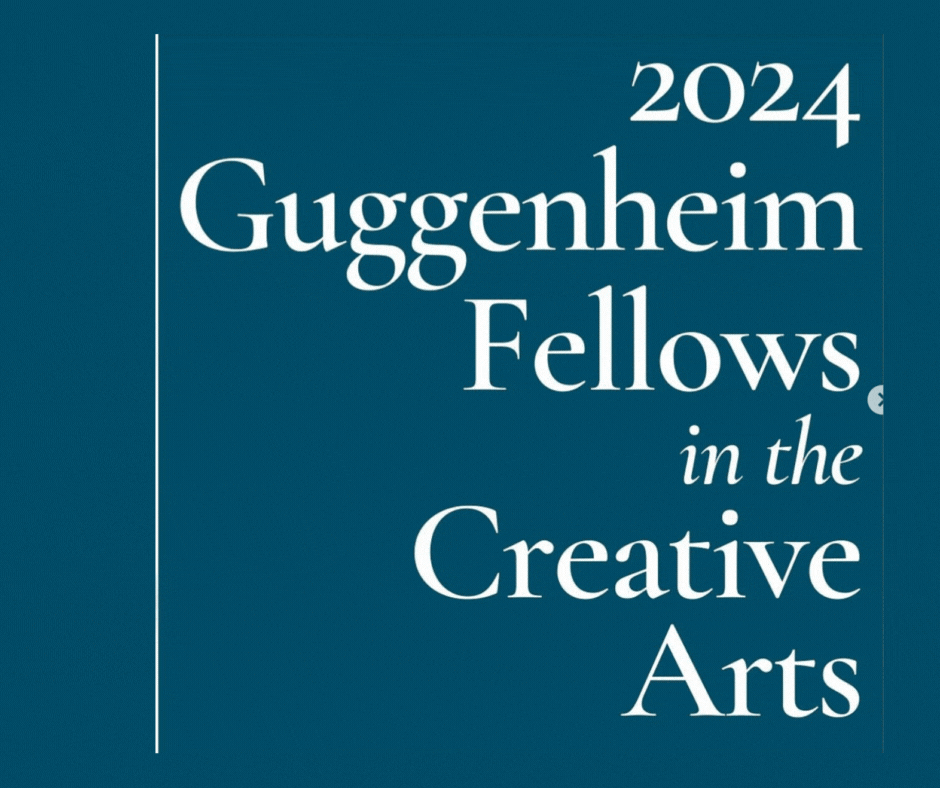
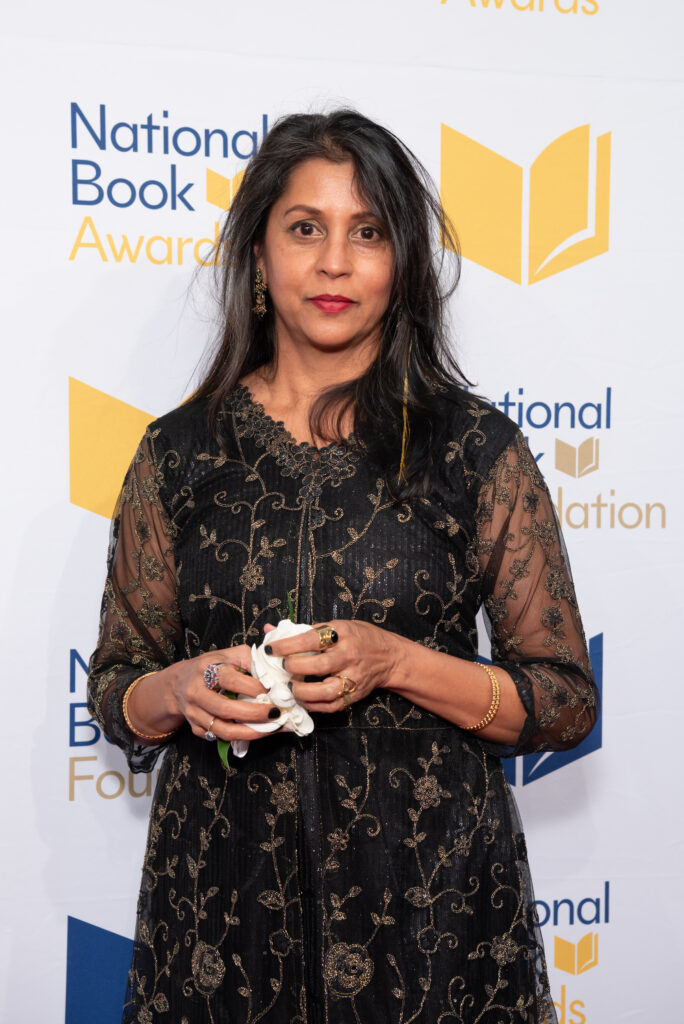

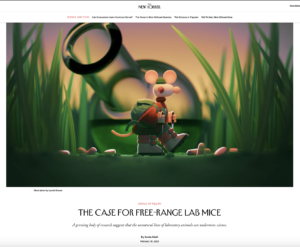
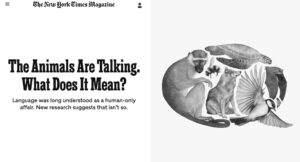
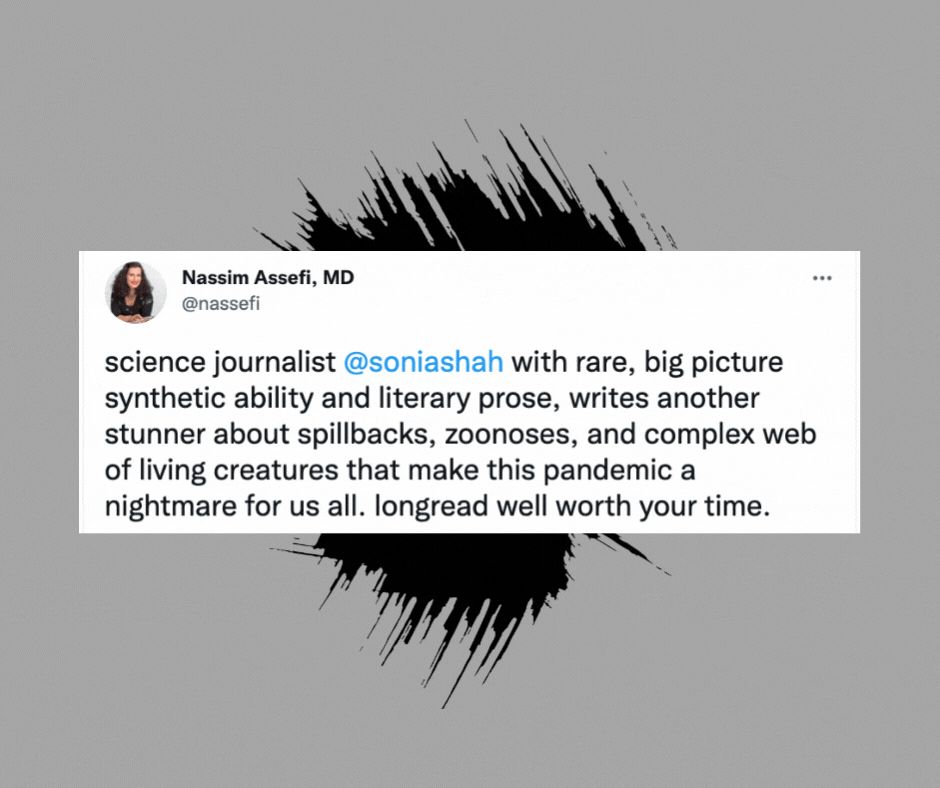
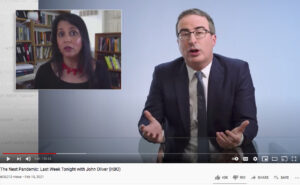
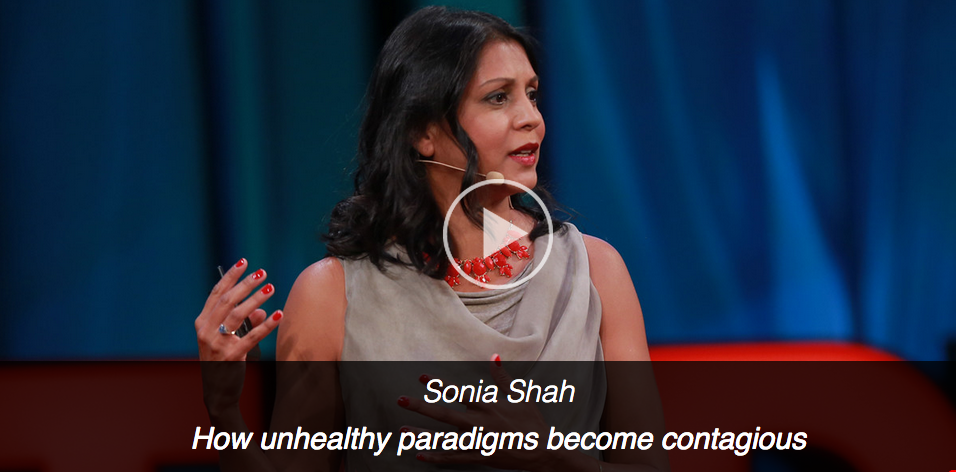
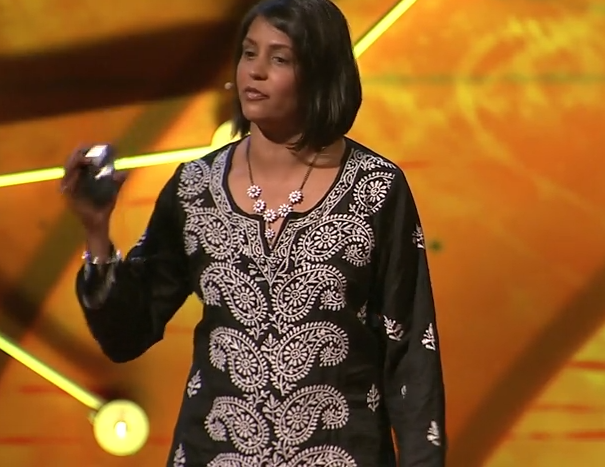




Leave a Reply